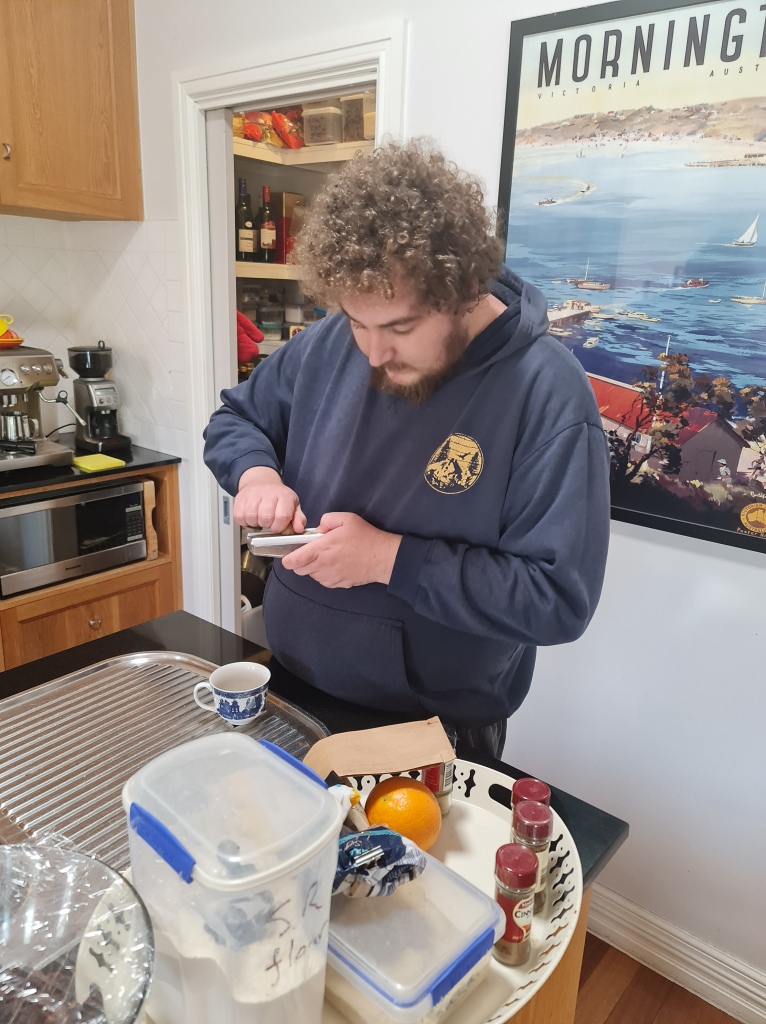Una Elizabeth Dwyer née Sneyd (1900-1982), first cousin twice removed of my husband Greg, was the daughter of Samuel Charles Sneyd (1863-1938) and Emily Sneyd née Way (1868-1952).
Usually in my family work I am able to find a considerable quantity and variety of information about the person I’m looking researching. I gain, I hope, some small insight into their circumstances and perhaps one or two events of their lives.
Una Sneyd and her family, however, managed to keep a very low profile. They didn’t write to the paper with bright ideas about burials in wicker baskets, weren’t imprisoned for bankruptcy, and weren’t exiled for their religious views. Thoreau said that the mass of men lead lives of quiet desperation; the Sneyds apparently just led quiet lives, and left few traces of themselves for a family historian to work with.
Una’s mother Emily was the seventh of ten children of John Way and Sarah Way née Daw. She was born in Grenfell, New South Wales in 1868 but her family moved to Parkes, New South Wales, when she was about five years old.
In 1892 Emily married Samuel Charles Sneyd, a police constable, in Hughenden, Queensland. I don’t know why Emily, then aged 24, was in Queensland; Hughenden is two thousand kilometres north of Parkes. As far as I know, no other members of her family were in Hughenden. At the time of her marriage Emily was living at Hughenden.

1892 marriage certificate of Charles Samuel Sneyd and Emily Way
Emily and Samuel Charles had six children:
- Lionel Walter Sneyd 1894–1976
- Cecil Sneyd 1896–1954
- infant daughter Sneyd 1898–1898
- Una Elizabeth Sneyd 1900–1982
- Ruth Dawes Sneyd 1904–1996
- Jasper Samuel Sneyd 1906–1991
Lionel was born in Hughendon but the others were born in the Emmaville district of north-east of New South Wales. Samuel Charles Sneyd worked as a miner.
When Emily’s father John Way died in 1911, four daughters were mentioned in his obituary, so it would seem Emily was still in touch with her family. When her sister Mary Ann Waine died in 1938, Mary Ann’s obituary mentioned only one sister, Eliza: the family seemed to have lost touch with Emily.
The Sneyd family moved to Sydney sometime after 1913. In August 1915 Lionel Sneyd enlisted in the Australian Imperial Force. He gave his father as his next of kin. At the time, he was living in Marrickville, an inner-west suburb of Sydney
Lionel served overseas in France, was wounded in action in July 1916, and was repatriated with a fractured left ankle.
Only limited number of electoral rolls for New South Wales have been digitised. In these I have been able to find Una Elizabeth Sneyd listed in 1930 as living at 39 Tupper Street, Marrickville. Her occupation was shop assistant. She was living with her parents and younger brother Jasper, who was also a shop assistant. Samuel was a carpenter. Emily’s occupation was listed as home duties.
In 1932 Una Sneyd married Patrick George Dwyer, an engine driver. In 1935 the Dwyers were living at 11 Audley Street, Petersham. Una’s occupation was given as home duties. Petersham is immediately north of Marrickville.
By 1936 the Dwyers had moved to 6 Brightmore Street, Cremorne. The suburb of Cremorne is on the lower North Shore in Sydney, 13 kilometres north-east of Marrickville, across the harbour. The Dwyers were still at the same address at the time of the 1980 electoral roll.
Samuel Charles Sneyd died in 1938 and Emily Sneyd died in 1952.


I have not ordered her death certificate, but I notice from the index that Emily’s mother was named Ruth; her family appear to have known very little about Emily’s parents.
Patrick and Una seem to have had only one child, called John. He is listed on the 1958 electoral roll as living with them and is named in their death notices. As the voting age was 21, he was born between 1936 and 1937. I have not found a newspaper birth notice.
Patrick George (Paddy) Dwyer died 29 December 1981 in hospital. His death notice stated that he was from Cremorne, loved husband of Una. The notice names his son and two grandsons. Una died on 13 February 1982, also in hospital. Her death notice also named her late husband, son and two grandsons. In May 1982 there was a notice in the Sydney Morning Herald associated with the estate of Patrick George Dwyer, retired council employee.
In researching Una I have been able to verify dates, places and relationships with the aid of birth, death and marriage indexes, electoral rolls and notices in the newspapers. The Sneyd and Dwyer families, however, did not attract much notice in the newspapers and it has been hard to find any events that enable me to get to know Una Dwyer née Sneyd.




























































